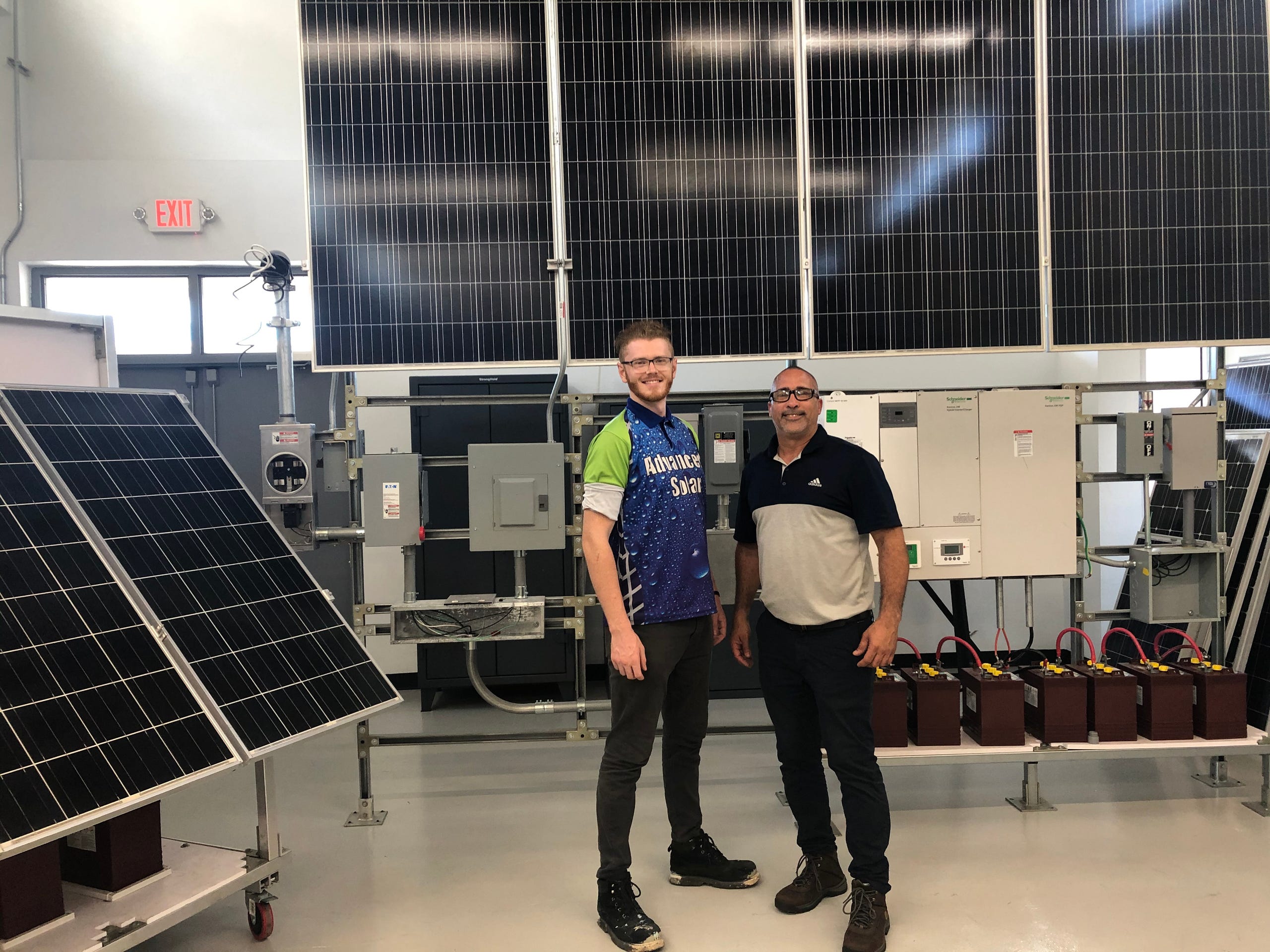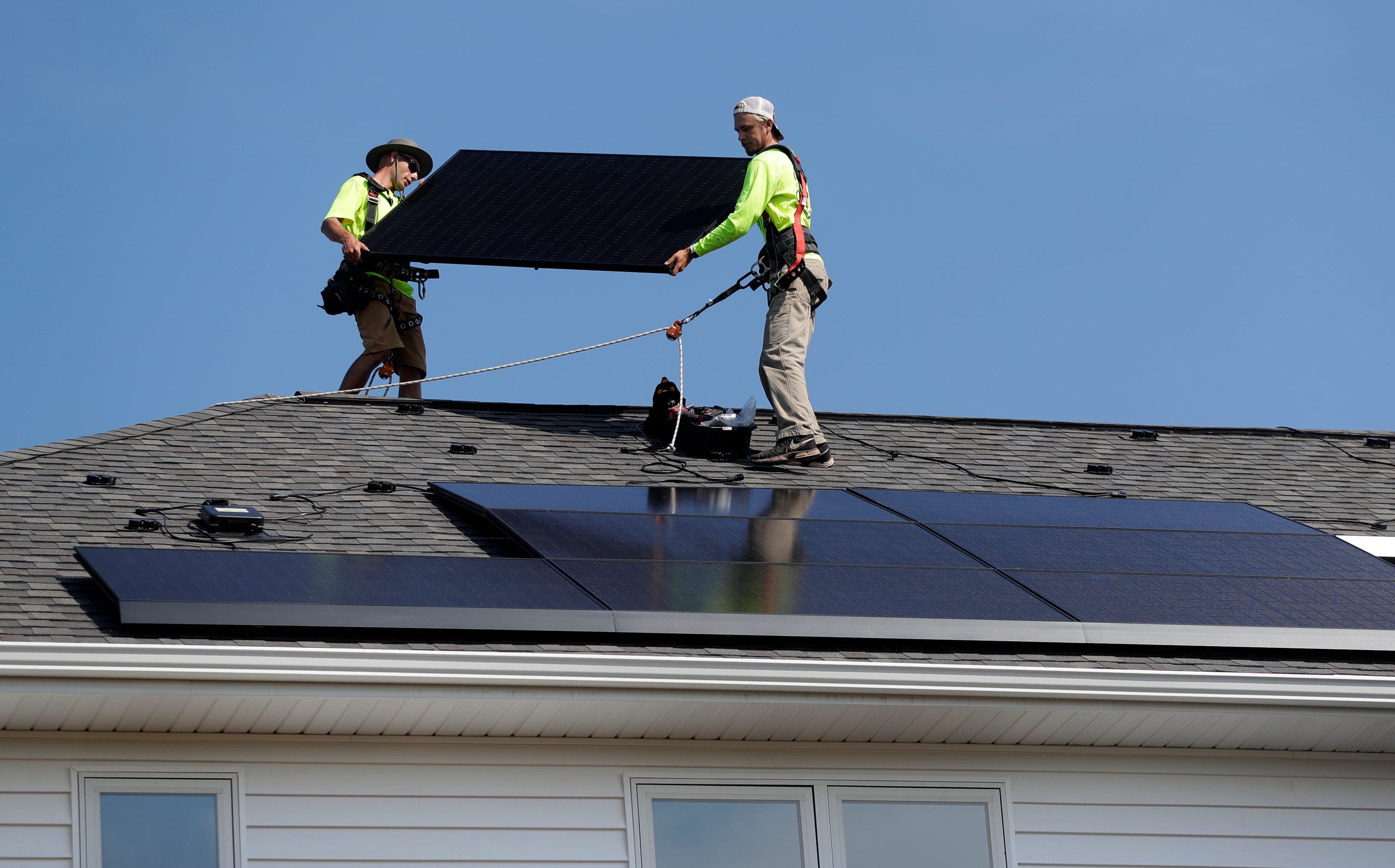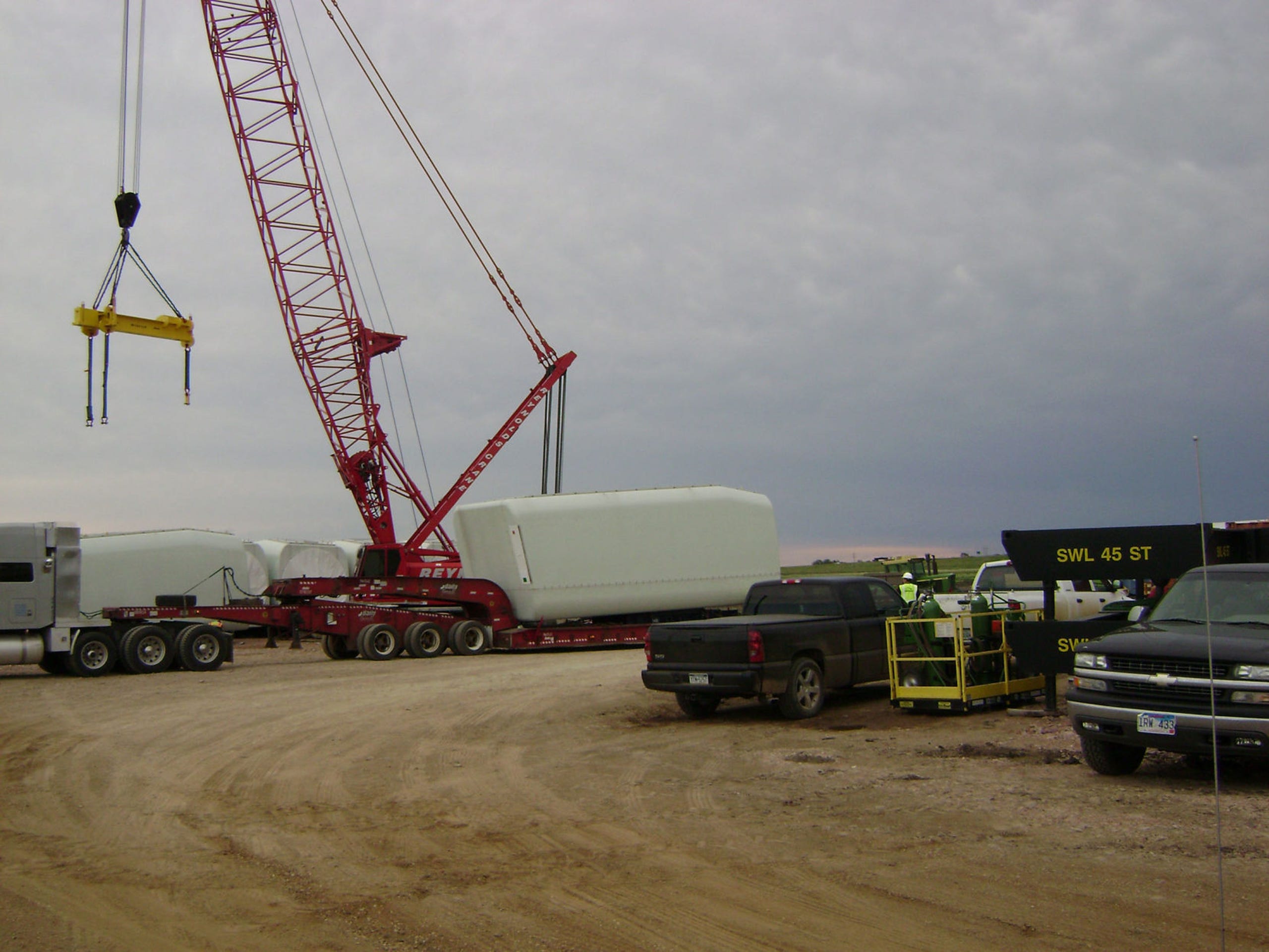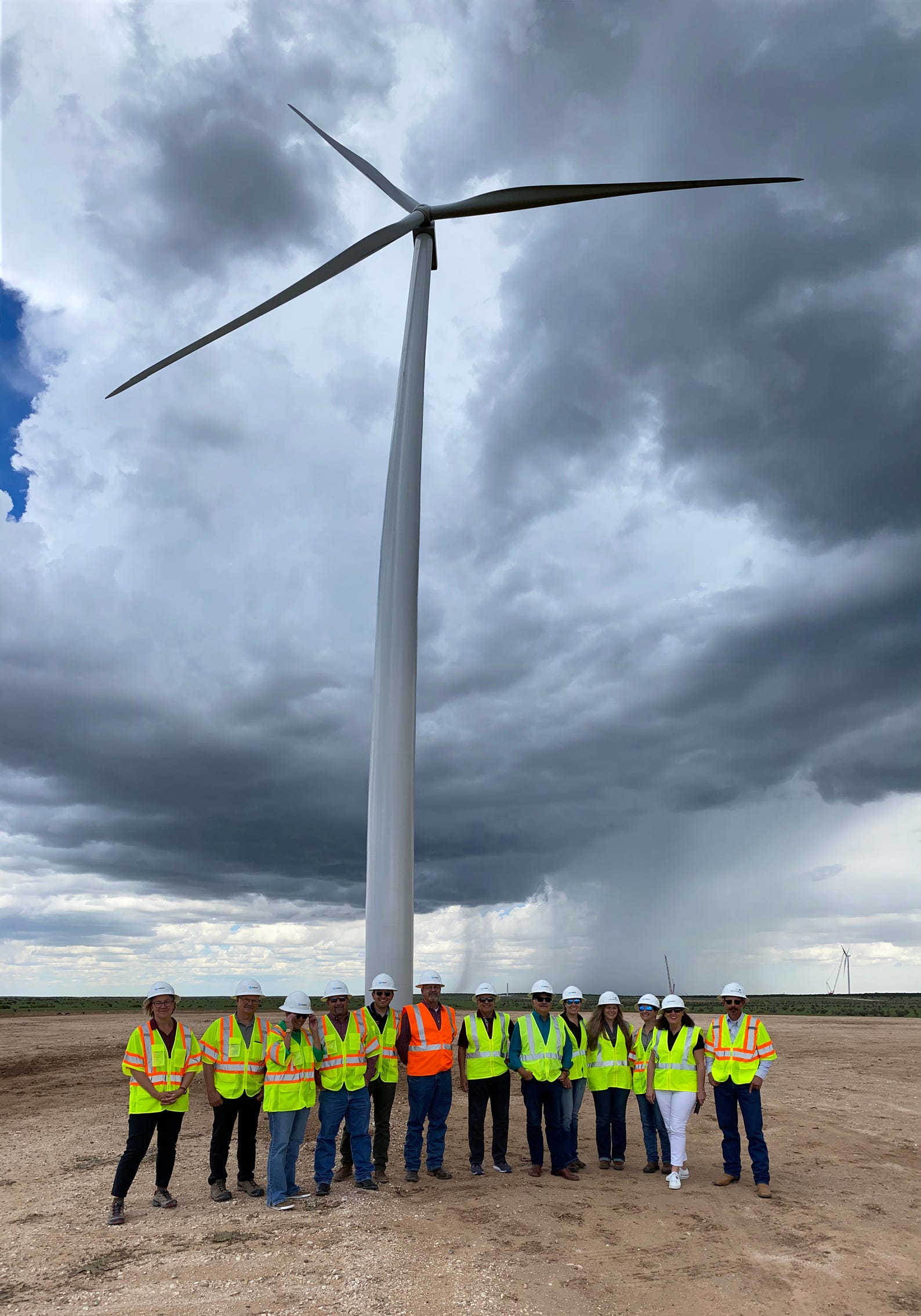Devon Smith remembers the small remote-controlled car, powered by the sun through a solar strip on its roof, that first sparked his interest in renewable energy.
But it was an island struck by the disaster that made him realize what he wanted to do for a career: help build the future.
A military kid who graduated high school in Georgia, Smith, 25, moved to Puerto Rico last year to enroll in an advanced solar training program at the Ramey Job Corps Center, a career and technical training institution in the coastal town of Aguadilla. With an expensive and unreliable power grid – especially following devastating tropical storms like 2017's Hurricane Maria – students and instructors alike see huge potential in building a solar future for the sun-bathed island.
“You cannot have this level of capability of technology and not put it to full use,” Smith said. “Of the entire island, only 5% of power brought in is from solar. That should not be. It should be the other way around.”
Smith, young and enthusiastic, is the kind of worker who experts say will be crucial in driving the larger clean-energy transition across the United States in the decades ahead. With hundreds of billions of dollars now flowing in from both the public and private sectors, vast workforces will be needed to build windmills, install solar panels, repair electric vehicles and install electric appliances in homes.
But many warn of a kink in the machinery: a dearth of workers like Smith.
Advanced Energy Economy, a trade association headquartered in Washington, estimates the creation of 23 million full- or part-time jobs in green technologies stemming from this summer's passage of the Inflation Reduction Act and last year's infrastructure bill. A recent Department of Energy labor report found energy sector job growth is already outpacing the economywide average, with huge gains in technologies like electric vehicles and solar outpacing losses in oil and gas.
Whether the U.S. will be able to fill those positions is an open question. Laure-Jeanne Davignon, vice president of workforce development for the Interstate Renewable Energy Council, a clean energy advocacy organization, says many blue-collar workforces are turning gray. The average age of electricians, home contractors, and other hands-on professionals is ticking up as workers retire faster than young people replace them. Her organization predicts a particular pinch as exponential job growth in fields like solar takes place over the next decade.
“That's what we're basing this, 'Oh my god, this is an emergency' on,” Davignon said. “And it's an emergency because of climate. We need to vastly accelerate our efforts.”
That rings true for Gretchen Cantali, director of an advanced program and apprenticeship development for the Home Builders Institute, a national nonprofit fostering career opportunities in residential construction. The Inflation Reduction Act provides billions of dollars to build and retrofit U.S. homes with highly efficient, next-generation cooking and HVAC equipment, like heat pumps and induction stoves. But the deployment will hinge on the availability and education of home contractors.
“Do we have the workforce to get this done? No, we don't right now,” Cantali warned.
Others are more optimistic. Harry Godfrey, managing director for Advanced Energy Economy, thinks there are currently enough knowledgeable workers, who with minimal retraining, can become clean-tech professionals. Electricians, for example, already know most of what they need to become solar installers, he said.
“I want to dispel the misconception that somehow, advanced energy means we have to train an entirely new workforce that doesn't exist right now to deploy these things," Godfrey said ."That's not the case."
While some member companies of his organization, which range from Apple to NRG Energy to carmaker Rivian, are making noise about a need for more workers, he said such concerns don't reach the magnitude of other limiting factors, like the availability of renewable-energy materials currently hamstrung by supply chain hang-ups.
Godfrey is further assured by the Inflation Reduction Act, which offers hundreds of billions of dollars to spur growth in commercial-scale wind and solar, and electric vehicle adoption. To fully access those incentives, U.S. companies must grow domestic production and pay workers prevailing wages, which he believes will pull workers into the sector.
Still, Godfrey understands the concerns of workforce training professionals and believes policymakers should be making efforts to grow the number of training programs for new and mid-career workers.
“There is a workforce there. Is it of the magnitude that we need? Probably not,” he said. “We probably need to be talking about how we ramp up.”
Blue-collar stigma risking green jobs
In middle school in the 1980s, it was a mandatory wood shop class that started Cantali's love for the trades. After high school, she apprenticed as a carpenter and went into construction, making a “great living.” At the Home Builders Institute, she now helps the next generation find similar opportunities.
But things are different than when she was in school, Cantali said. Administrators and counselors are incentivized to get as many students as possible to college. That's led them to scale back shop classes and vocational offerings. Such tracks are often compartmentalized entirely to separate buildings or schools. There's a stigma the programs are only for those not smart enough for college.
But with professional trades imperative to power the nation's energy transition, Cantali says now is the time for a revaluation of such education.
“How would any middle schoolers fall in love with construction if they're never seeing it or touching it?” Cantali said. “We need to go back to the basics.”
Cantali says bringing young people into the clean energy sector is crucial. She's skeptical the existing workforce will be able to pull enough weight on its own, or that there are many electricians in their 40s or 50s suddenly eager to climb onto roofs to install solar panels.
“It's hard to teach an old dog new tricks,” Cantali said.
She's also unsure that simply increasing federal incentives will prove sufficient. Many decisions about K-12 educational offerings are made at the state and local levels, she noted. Further, views about the value of blue-collar work are cultural, she said. There's a need to not only increase educational offerings but generate excitement and respect for technical careers to fight stigma.
“We need more success stories. More people need to know what resources are available to them,” Cantali says. “Let's push more men and women into these programs.”
Young people want to join the climate fight, but don't know how
Surveys show there is potential to attract young people to green jobs.
Service Year Alliance, a nonprofit that advocates for young Americans to spend a year performing civil service, polled hundreds of 18- to 28-year-olds in January and found 91% indicated some level of concern about climate change. But nearly two-thirds said they were unsure about what they could personally do to have an impact.
Kristen Bennett, chief executive officer of Service Year, said the polling shows an opportunity was missed when a proposed Civilian Climate Corps failed to survive negotiations over the Inflation Reduction Act this year. The $30 billion proposal would have funded temporary civil positions for young people to prepare communities for climate change and get a taste of green jobs. Bennett says her group will continue looking for similar opportunities to get young people trained and involved.
“One of the things that are positive here is that young people want to be able to learn skills and progress themselves individually, while also making a tangible impact on something they really care about,” Bennett said.
Raj Daniels, director of strategic partnerships and sustainability initiatives for Nexus PMG, an engineering firm in the renewable sector, said good-paying green jobs can be obtained with less expensive education than is required for other fields. The average debt for a bachelor’s degree exceeds $25,000, he noted, more than double the cost to become a certified wind turbine technician. For many other jobs in the trades, young workers are paid to work as an apprentice, rather than pay themselves to go to college for an education.
But it's also helpful to do away with the idea that clean energy jobs only involve manual labor or don't utilize college degrees, Daniels said. That creates an uphill climb with many parents, particularly those in immigrant families, who see college as the ticket to a better life for their children.
A former tech entrepreneur, Daniels said the message should be that there will be trillions of dollars flowing into the sector. That'll mean plenty of opportunity for work of all kinds, from physical installation to software engineering, to marketing and business management, with roles often blurring lines.
“This ecosystem needs everyone,” Daniels said. “Bring whatever skillset you have.”
That rings true with Smith, who plans to attend college to study business management after finishing his solar apprenticeship at Ramey. Then, he hopes to launch a business installing the latest solar technology in Puerto Rico.
Smith says he sees a lot of interest among his peers in solar technologies, but also trepidation about pursuing non-traditional careers.
“The interest is there, but people are just scared to step outside of their comfort zones," Smith said. “It's really not that hard."






